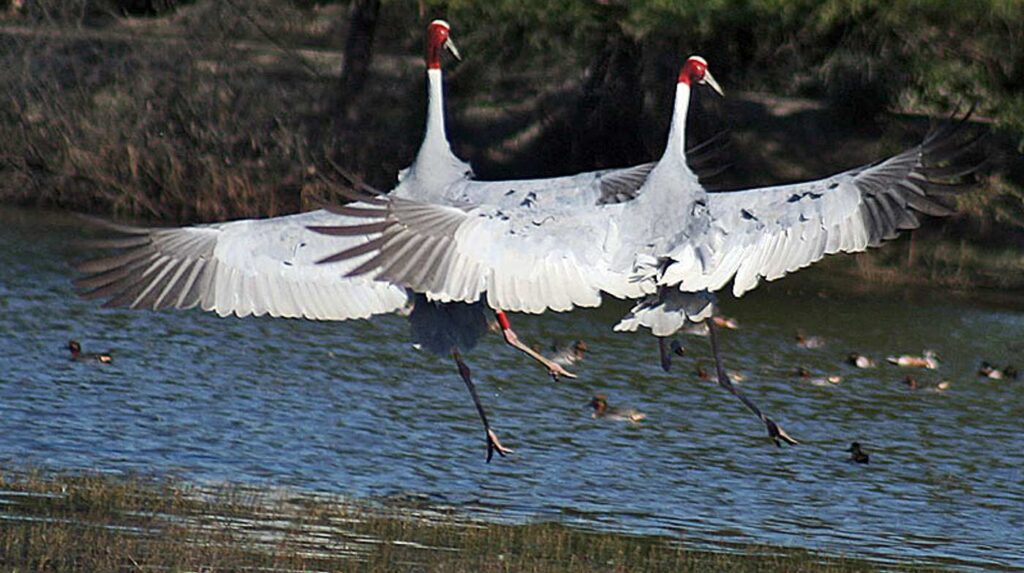
Cranes in Cambodia are getting a helping hand from an unlikely source, as rice farmers sign up to take a pay cut in the name of conservation.
By switching to grow native rice crops, and leaving a small piece of their harvest behind for rare eastern sarus cranes, the farmers are providing a safe haven for the world’s tallest flying bird.
Mostly white, but with a brilliantly colored head—as red as a male mallard’s is green—the eastern sarus crane can reach just under 6-feet (176 cm) tall. Antigone antigone sharpii is Critically Endangered according to the IUCN, with maybe 200 individuals remaining across the wetlands of Southeast Asia. In the last 2 years, fewer and fewer have arrived in farmer Khean Khoay’s rice paddy.
In the village of Koh Chamkar, in Cambodia, Khoay tends his rice paddy on the fringes of the Mekong delta, the spillway of the longest river in Southeast Asia, and one of the most fertile agricultural areas in the region. Khoay is one of 16 farmers in the village, lying on the edge of the protected area of Anlung Pring, where farming is practised in accordance with an agreement made with NatureLife—a Cambodian conservation society funded by the IUCN Netherlands and BirdLife International.
The eastern sarus cranes stalk the embankments of the fields where they pluck rice grains before harvest season.
To encourage the migratory bird to return year after year to the safe and protected paddies, NatureLife pays a 10-year lease on the farmer’s land upfront, which is equivalent to around 30% more than net income on it, to grow native short-grain wild rice varietals which the cranes prefer.
Currently 42 acres of farmed land in Koh Chamkar has been turned over to native rice cultivation, which yields about half as much as jasmine rice.
“We are aware of the yield limitations but we don’t mind as we are keeping [half] the rice for the cranes,” Bou Vorsak, CEO of NatureLife Cambodia, told The Guardian.
The agreement also stipulates that the farmers are not to sell off their land under the lease period, and use only natural pesticides and fertilizers. In return they are sold rice seed at subsidized prices, as well as organic farming supplies and instruction from NatureLife’s partners. If all the conditions are met, NatureLife will pay market rate for the 5% of rice left to the birds with money received from the Cambodian environmental ministry.
This year, the 16 farmers from last season have increased to 40, and another farming village of Chress has joined the program. Together they are providing around 84 acres of protected farmland for the cranes.
MORE: Giant Eagle-Owl Unseen For 150 Years Just Caught on Camera
“I only recall seeing this strange, tall bird with a red head,” farmer Tom Ke told The Guardian. “I have now started to pay more attention to them. With more food available for them, I hope they won’t become extinct.”
With NatureLife’s long term vision of bringing 2,600 acres of farmland around the Anlung Pring protected area, come what may there will be substantial food always available for the migrating cranes, and that’s hopeful for the species.
LET Hope Soar; Share This Good News…




















